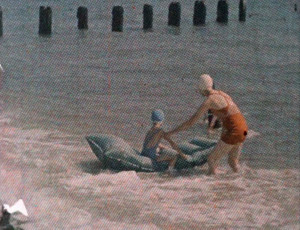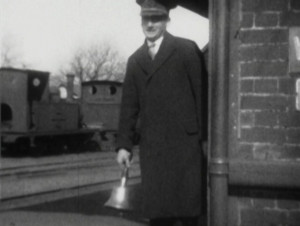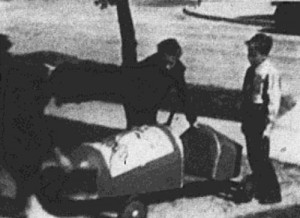
"Nineteen thirties holiday film of the Harrison family at a number of Suffolk coastal holiday hotspots; including Southwold, Lowestoft, the Broads (Beccles), and Thorpeness. This reel, with scenes in both Dufaycolor and black and white, shows the family having a jolly old time bathing, picnicking at their beach hut, horse riding, and sailing. Intertitles include “Susan on the li-lo” and “tea with the mater” (BFI.org.uk)

"A locally made film of the Southwold to Halesworth narrow-gauge railway." (EAFA Database)
"Item is a film of a trip Dr. Willinsky took to the Spanish Moroccan city of Tetuan with his wife, Sadie. In the form of a travelogue, footage of the sights along city streets, landmarks, markets and the local population are accompanied by music and Dr. Willinsky's commentary. Sadie is occassionally spotted sight-seeing." Ontario Jewish Archives.
"The unique wilderness of the Spatsizi Plateau, and the area's flora, fauna and scenery, as observed by guide-outfitter Tommy Walker. The film points out the negative impact of recent development in the area, and emphasizes the importance of preserving the Spatsizi. Mountain sheep, Stone sheep, Osborn caribou, moose, eagles, beaver, marmots, and many other wildlife species are shown" British Columbia Archives.
This film was produced at some time between 1956 and 1970.
"Spear That Fish - Few professionals have yet brought to theatre screens such scenes as Leon Paddock has captured in this entertaining 16mm color film. Using underwater camera equipment which he designed himself, he and an associate journeyed to the west coast of Mexico where they took the camera underwater and shot scenes of sturdy swimmers with water-goggles and swim-fins exploring the marine life of Mexico's off-shore waters. Shown are divers using spears and spear-guns in hunting game fish, and one diver's encounter with devilfish and other unusual marine life. The climax is marked by a duel between a diver and a shark, with the diver knifing the shark and bringing it to surface. The color photography is some of the best 16mm underseas camerawork yet to be seen. It demonstrates unusual skill as well as the filmer's knack of obtaining excellent exposures with color film in the admittedly difficult conditions which underwater invariably presents. The narration on tape contributes adequately to the screen presentation enhancing the continuity of the slick editing of this picture." American Cinematographer, May 1952, 223-4.
"Item is a production of Dr. Willinsky's trip to Spain with his wife, Sadie. In the form of a travelogue, footage of landmarks, historic sites, and the local population is interspersed with captions and maps that were added in by Dr. Willinsky to denote locations and provide context. The production includes footage from Madrid, Cordoba, Segovia and Valencia. Sadie is occassionally spotted exploring sites and interacting with locals and travel companions who are probably family friends or relatives." Ontario Jewish Archives.

"Speedy May tells a pleasant tale about two boys who try to earn enough money to buy wheels for a new soapbox hot rod, a dreamboat which Dad has promised he will build for them if they will but supply the wheels. Failing in their financial efforts, the boys nevertheless are befriended by a neighborhood fireman who, with only two girls in his family, gives the lads four gleaming cart wheels he had been husbanding. The rest is up to Dad, and he fulfills his promise in a sparkling sequence of construction patterns filmed in his cellar workshop. Technically, this film is excellent, although its cinematic virtues are somewhat dimmed in its earlier passages by too deliberate a story pace. The appeal of the production, however, is more than assured by the sincere, natural portrayals of all hands, Harold Platt, the producer, plays his own role of father with ease and good grace. Dennis and Steve, the two youngsters, are artless and unaffected in their determined crusade for the new hot rod. And Captain Leonard Dobson as (and in fact) the fireman, tugs one's heartstrings with just the right appeal to make his son-less state seem credible. It is for his wife May that the new dreamboat - and this charmingly competent picture - are named" PSA Journal, Jan. 1955, 51.
Total Pages: 299